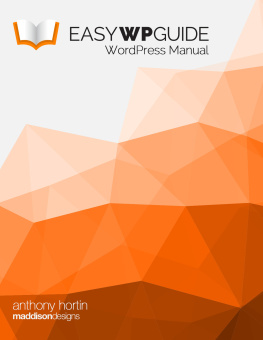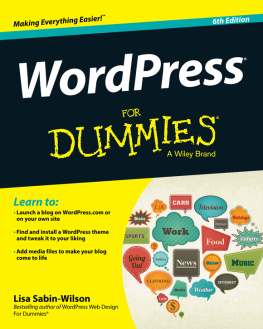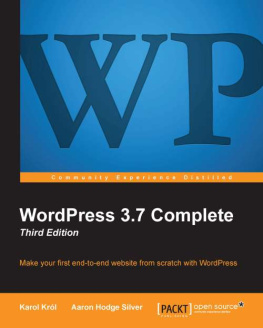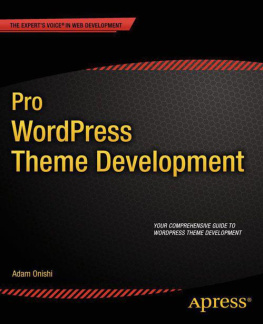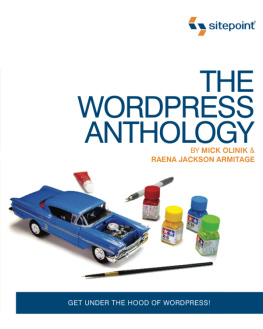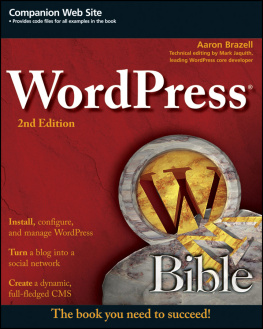
INTRODUCTION
DEAR READER, thank you for picking up this book. WordPress is the most popular self-hosted website software in use today. It is available as an open source project, licensed under the GPL, and is built largely on top of the MySQL database and PHP programming language. Any server environment that supports that simple combination can run WordPress, making it remarkably portable as well as simple to install and operate. You dont need to be a systems administrator, developer, HTML expert, or design aesthete to use WordPress. On the other hand, because WordPress has been developed using a powerful set of Internet standard platforms, it can be extended and tailored for a wide variety of applications. WordPress is the publishing mechanism underneath millions of individual blog voices and the engine that powers high-volume, high-profile sites such as CNNs websites and blogs. It was designed for anyone comfortable navigating a browser, but is accessible to web designers and developers as well.
Given that range of applications and capabilities, it can prove hard to know where to start if you want to make use of the power of WordPress for your specific purposes. Should you first study the database models and relationships of content and metadata, or the presentation mechanics that generate the HTML output? This book was designed for readers to develop a knowledge of WordPress from the inside out, focusing on the internal structure and flow of the core code as well as the data model on which that code operates. Knowing how something works often makes you more adept at working with it, extending it, or fixing it when it breaks. Just as a race car driver benefits from a fundamental knowledge of combustion engines, aerodynamics, and the mechanics of automobile suspension, someone driving WordPress through its full dynamic range will be significantly more adept once acquainted with the underlying software physics.
WHO IS THIS BOOK FOR?
It was the dichotomy between the almost trivial effort required to create a WordPress-based website and publish a first post to the world and the much more detailed, broad understanding required to effect mass customization that led us to write this book. Many books on the market provide guidance to beginning bloggers by walking you through the typical functions of creating, configuring, and caring for your WordPress site. Our goal was to bridge the gap between an expert PHP developer who is comfortable reading the WordPress Codex in lieu of a manual and the casual WordPress user creating a public persona integrated with social networking sites and advertising services, with a tailored look and feel.
In short, we hope to appeal to a range of developers, from the person looking to fine-tune a WordPress theme to a more advanced developer with a plugin concept or who is using WordPress in a large enterprise integrated into a content management system. We do this by exploring WordPress from the inside out. Our goal for this book is to describe the basic operation of a function and then offer guidance and examples that highlight how to take it apart and reassemble that function to fit a number of needs. WordPress users who are not hardened PHP developers may want to skim through the developer-centric section, whereas coders looking for specific patterns to implement new WordPress functionality can start in the middle and work toward the end.
HOW THIS BOOK IS STRUCTURED
This book is divided into three major sections: Chapters 1 through 4 are an overview of the WordPress system, its major functional elements, and a top-level description of what happens when a WordPress-generated web page is displayed. Chapters 5 through 9 build on this foundation and dive into the core of WordPress, describing internal code flow and data structures. This middle section is strongly developer-oriented, and describes how to extend WordPress through plugins and customize it via themes. The last section, Chapters 10 through 15, combines a developer view of user experience and optimization with the deployer requirements for performance, security, and enterprise integration.
The following is a detailed chapter-by-chapter overview of what you can expect to find in this book.
Chapter 1, First Post, contains a brief summary of the history of the WordPress software core, explores some popular hosting options and why community matters in a content-centric world, and concludes with the basics of do-it-yourself WordPress installation and debugging.
Chapter 2, Code Overview, starts with the mechanics of downloading the WordPress distribution and describes its basic contents and file system layout. A top-to-bottom code flow walks you from an index or specific post URL, through the process of selecting posts, assembling content, and generating the displayed HTML. This chapter is a map for the more detailed code tours in the developer-focused section.
Chapter 3, Working with WordPress Locally, covers the many benefits to working with WordPress on your local computer. This chapter also reviews the various setups for local development on a Microsoft Windows or Apple computer. Finally, youll cover how to deploy your local changes to a remote server using various deployment methods.
Chapter 4, Tour of the Core, examines the essential PHP functions within the basic WordPress engine. It serves as an introduction to the developer-focused middle section of the book and also lays the foundation for the deployment-, integration-, and experience-focused chapters in the last section. This chapter also covers using the core as a reference guide, and why it is best not to hack the core code to achieve desired customizations.
Chapter 5, The Loop, is the basis for the developer-centric core of this book. The WordPress main loop drives the functions of creating and storing content in the MySQL database, as well as extracting appropriate chunks of it to be sorted, decorated, and nested under banners or next to sidebars, in both cases generating something a web browser consumes. This chapter disassembles those processes of creating, saving, and publishing a new post as well as displaying content that has been stored in the WordPress MySQL databases. The underlying database functions and the management of content metadata are covered in more detail to complete a thorough view of WordPresss internal operation.
Chapter 6, Data Management, is the MySQL-based counterpart to Chapter 5. The core functions create, update, and manipulate entries in multiple MySQL database tables, and this chapter covers the database schema, data and metadata taxonomies used, and the basic relations that exist between WordPress elements. It also includes an overview of the basic query functions used to select and extract content from MySQL, forming a basis for extensions and custom code that needs to be able to examine the individual data underlying a blog.
Chapter 7, Custom Post Types, Custom Taxonomies, and Metadata, explores the different types of content and associated data in WordPress. Youll cover how to register and work with custom post types for creating custom content in WordPress. Custom taxonomies are also dissected, and well dive into the various setups with examples. Finally youll cover post metadata and the proper ways to store arbitrary data against posts in WordPress.
Chapter 8, Plugin Development, starts with the basic plugin architecture and then explores the hook, action, and filter interfaces that integrate new functionality around the WordPress core. This chapter demonstrates the interposition of functions into the page composition or content management streams and how to save plugin data. Examples of building a plugin using a simple framework outline the necessary functionality of any plugin. This chapter also covers creation of widgets, simpler-to-use plugins that typically add decoration, additional images, or content to a blog sidebar; many plugins also have a widget for easier management. Publishing a plugin to the WordPress repository and pitfalls of plugin conflict round out the discussion of WordPresss functional extensions.
Next page
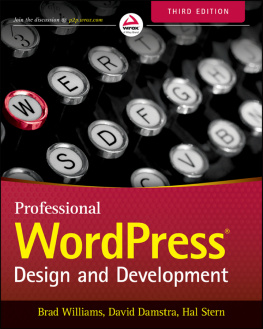


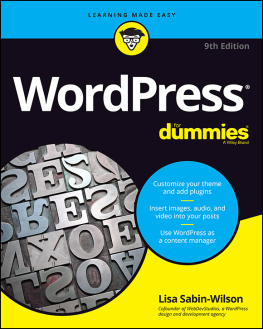
![Coleman Jason - Building Web Apps with WordPress [WordPress as an application framework]](/uploads/posts/book/171277/thumbs/coleman-jason-building-web-apps-with-wordpress.jpg)
